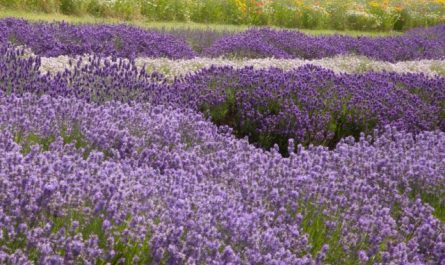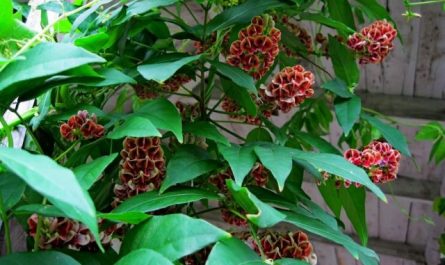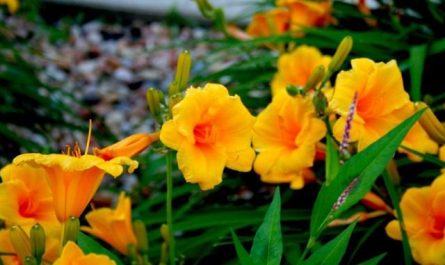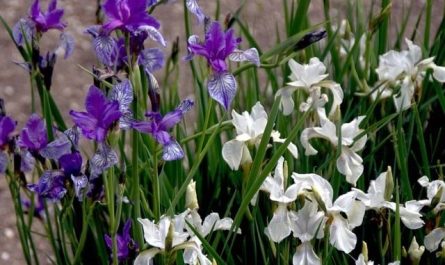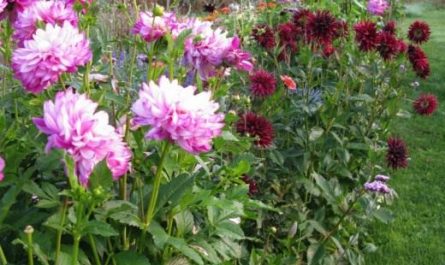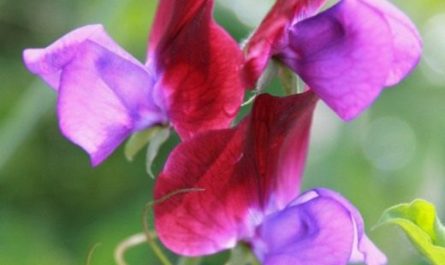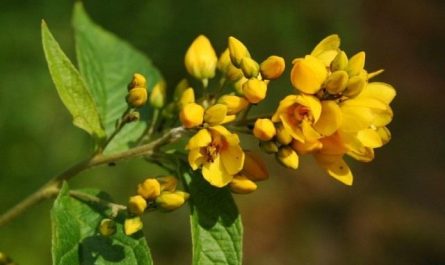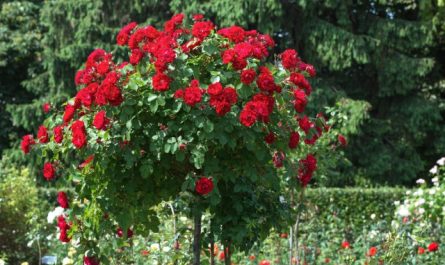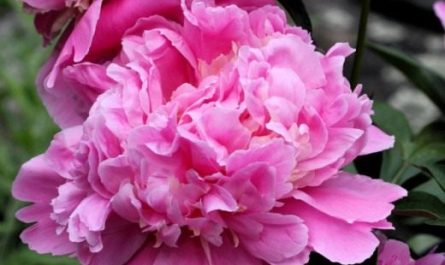Nature is the most amazing artist and the most inventive inventor. If you look closely, you can see something frightening in an ordinary flower. And strange and, at first glance, completely inedible fruits can turn out to be tasty and healthy. Tropical residents often indulge in exotic appearance, but even familiar plants of the middle zone can surprise everyone with unusual fruits and seeds.

“Hand of Buddha”
The fingered citron is better known under the strange name of “Buddha’s hand”. And all thanks to its unusual fruits, formed as a result of mutation. In Asian countries, more than 12 varieties of this citrus are grown. In Japan, the fingered citron is called bushukan, and in China – fo-shou.

The small fruits have an unremarkable oblong shape and a purple-brown color. But as they ripen, the ends branch out, forming numerous closed or spreading “fingers” of bright yellow color. The pulp of the fruit contains almost no juice or seeds. In cooking and perfumery, the aromatic peel with the smell of lemon and lavender is more often used.
Brazilian “grapes”
The scientific name of the Brazilian grape tree is Jaboticaba. It is an evergreen fruit plant common in the tropics. Jaboticaba has a memorable appearance at all stages of development. The reason is the effect of cauliflory.

Flowers, and then fruits, “sit” directly on the skeletal branches and trunk. Black drupes densely cover the tree, resembling either beads or some strange disease. The fruits are processed into wine and sweet preserves. The bitter skin serves as a source of natural rich red dye, and in dried form is used in folk medicine.
Bright euonymus capsules
The euonymus makes its presence known most loudly in the fall, when the foliage turns pink. But you can notice the euonymus much earlier. Not only the autumn coloring, but also the fruits of this bush are unlike others. Numerous hanging pink capsules with protruding orange seed heads last a long time, decorating the plant even after the leaves have fallen. The fruits of the European euonymus are so numerous that even without foliage the bush remains a bright pink spot in the garden.
Attention! All parts of the euonymus, including the fruits, are poisonous!

“Eggplants” on vines
Of course, we are not talking about real eggplants, but about the fruits of the Far Eastern vine akebia. In appearance, they are very similar to small light purple eggplants. In Japan, almost all parts of the plant are used as food. Ripe fruits open, revealing a glandular white core.

The taste and aroma of the fruit is inconsistent and depends on the species and degree of ripeness. Those who have tried akebia have detected notes of raspberry, lychee, passion fruit and melon. Akebia is very beautiful when in bloom. Purple-violet flowers exude a light chocolate aroma, for which the plant is often called the “chocolate vine”.
Lotus Nucifera “Shower Heads”
The lotus is a plant, I dare say, cult and sacred for Buddhists all over the world. A symbol of harmony and purity. This relict aquatic flower was widespread in the Tertiary period. At present, the largest lotus fields are not in China or India, but in Russia, in the Volga delta.

When the petals fall off (and the lotus holds a flower for only three days), a green receptacle in the form of an inverted cone remains. The seeds “protrude” from the receptacle, turning it into something like a shower head. Although to some, the seed-“nuts” resemble strange eyes. In the countries of Southeast Asia, especially in Japan, lotus rhizomes are a popular dish. The seeds are fried or ground into flour, and are also used to make rosaries.
“Doll’s eyes” of the crow
The North American Indians call the black cohosh “Doll’s eyes”. And all because of the unusual and slightly frightening fruits. They resemble white porcelain eyes with a black pupil, planted on bright red needles. The entire plant is highly poisonous, especially the fruits. A couple of pieces eaten by mistake can be enough to stop the heart.

However, the “eyes” are harmless to birds, and the Indians even found a use for them in traditional medicine. Despite the toxicity, the black cohosh is often grown as an ornamental shrub. The plant has beautiful carved green foliage and small fluffy white inflorescences.
star anise
Gifts of nature in the form of fruits and seeds can be not only unusual, but also beautiful, even perfect in form. This fully applies to the fruits of the star anise, or star anise. Star anise fruits are star-shaped multi-leaflets, hence the second name. The pericarp (seed shell) contains valuable essential oil, reminiscent of anise.

Europeans (star anise came to Europe from Southeast Asia in the 16th century thanks to the efforts of Portuguese sailors) quickly realized that it was easier and cheaper to extract oil from star anise than from anise seeds. So in the production of all kinds of liqueurs and in the pharmaceutical industry, the eastern spice has practically displaced the herbaceous relative of parsley. The fruits are picked from the tree unripe, dried in the sun and used whole or ground as a seasoning. It is difficult to imagine a traditional European Christmas without the elegant decoration in the form of anise stars.
Giant beans
There is nothing unusual about the fruits of entada, a tropical African liana. Except for the size. Entada is a typical representative of the legume family, the fruit is a bean. But this bean can reach 1,5 meters in length and weigh 35 kg. Ritual objects, amulets and jewelry are made from the grains. Representatives of African tribes eat the grains (we will not specify the method) to induce vivid dreams and communicate with the spirit world. In addition, the beans are used in traditional medicine.

Entada is found not only in Africa, but also in South America, Australia and southern Asia. Ripe beans, having opened, do not shed seeds and withstand prolonged exposure to sea salt. Thanks to this, they easily “travel” across the sea and take root in a new place.
Spectacular Nuts
Who wouldn’t want to plant a walnut tree on their plot? Surely, many have tried. And most likely unsuccessfully. But there is a way out. The fruits of the Manchurian walnut are in no way inferior to the walnut in terms of usefulness and taste. And the tree itself, despite its Far Eastern origin, can withstand frosts down to -52°.

The pulp of the nut is eaten fresh and used in confectionery production. Jam is made from green nuts after long soaking. A dark dye is obtained from the shell, and the leaves serve as a substitute for mothballs. However, the Manchurian nut has not received such widespread use as the walnut.
And it’s all about the structure of the fruit: the pulp takes up less than 20% of the volume. Everything else is the shell and hard partitions that prevent the pulp from being extracted. But it is this internal framework that makes nuts an excellent material for jewelry, crafts, and interior decor. Carved transverse and longitudinal sections look very original and elegant.
“Cannonballs” of Kurupites
Couroupita guianensis, or cannonball tree, is a large evergreen tree native to South America. For the last three centuries, couroupita has been actively cultivated in Southeast Asia, where it has acquired special religious significance due to its identification with the sacred sal tree. Large, 14 to 24 cm in diameter, brown spherical fruits, when ripe, fall to the ground and split with a loud crack, vaguely reminiscent of a cannon salvo.

The fruits are heavy and can cause injury. In places where the kuroupit grows, they even install signs warning about the danger of falling “cannonballs”. The pulp of the fruit is glandular and light, but when exposed to air it turns blue and begins to emit an unpleasant odor. It can cause an allergic reaction. Flowers and fruits are used in folk medicine, fragrant inflorescences – in perfumery, and souvenirs and household utensils are made from the hard shell.
Interesting fact! The flowers and fruits contain the same blue dyes as Indigofera tinctoria, the natural source of indigo.
Strange “apples” aka
Bligia savory, or ackee, is a fruit tree native to West Africa. It is now grown in Central and South America, and has become a national fruit in Jamaica. For some reason, ackee fruits are called “apples,” although they are not similar biologically or in appearance (they look more like smooth, ribbed peaches). The ripe red-orange fruit splits along the ribs into three parts, revealing creamy flesh and three shiny black seeds.

The taste of ackee is similar to that of a walnut. However, only the pulp of naturally ripened fruits, i.e. fruits that have opened on the branches, is eaten. The seeds always remain poisonous. Sometimes the pulp is eaten raw, but more often it is fried or boiled and served as a side dish.
Crazy “cucumbers”
Actually, the mad cucumber is a specific type of herbaceous vine from the Pumpkin family. But another representative of this family, Echinocystis or prickly thorn, is also known under this name. This is an annual vine with powerful growth energy. The fruits of the mad cucumber and prickly thorn are small prickly “cucumbers”, nicknamed mad for their ability to explode when ripe, throwing out seeds.

The fundamental difference between the vines is that the mad cucumber is a poisonous plant, it is used exclusively in folk medicine and under the supervision of a doctor. The “cucumbers” of the Echinocystis are quite edible, although the vine is more often grown for landscaping vertical structures and as a honey plant. The inflorescences of the prickly cucumber are very fragrant fluffy white panicles.
Note. Both vines are aggressive, especially Echinocystis, which, being an invasive North American species, has taken root here and gone wild.
Time bombs
Another plant with an explosive character is the Hura fiscaensis, better known as the dynamite tree. This tree is native to the tropical forests of South America and reaches a height of 60 m. Like most plants from the Euphorbiaceae family, it is extremely poisonous. The poison is contained in maximum quantities in the thick thorns that dot the trunk.

The fruits look like small flattened ribbed pumpkins. They take a long time to ripen, but when ripe they burst and scatter seeds in a radius of up to 100 m, and the speed of the “shot” reaches 70 m/s. Of course, the fruits are not eaten, but their juice is used in folk medicine.
What unusual fruits do you know?


